What is a Data Plate? The Complete Guide
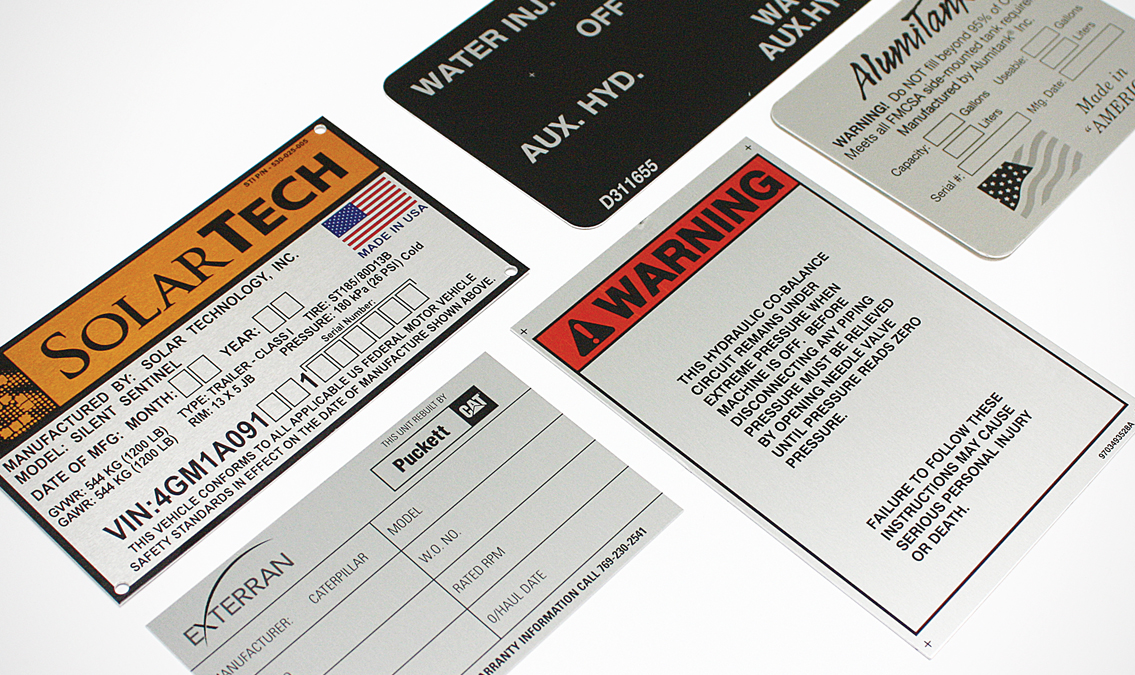

Every organization with equipment or facilities needs to be able to identify, track, and manage its equipment and other important assets. Data plates are an efficient way to do this at scale.
However, if you’re new to using data plates, you might wonder which use cases they’re a fit for, which materials to use for your data plates, and how to read data plates.
In this comprehensive guide, we’ll explain what data plates are and how to read them, as well as share tips on how to design data plates that keep your company both safe and compliant.
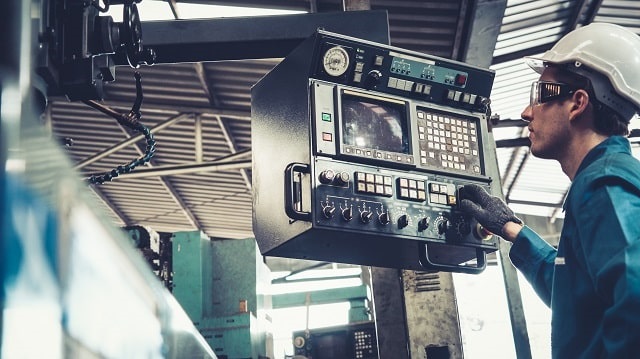
Image by Blue Planet Studio via Shutterstock\
Data plates are durable labels that are affixed to machinery, equipment, or tools. They provide essential information like:
Organizations in manufacturing, healthcare, transportation, energy, heavy industry, military, and defense use data plates to communicate information about their assets to employees.
Because data plates communicate such crucial information, they’re usually manufactured from durable metal substrates. In some situations, a business might make its data plates out of a strong plastic or composite material. The goal is to choose the most durable and appropriate data plate substrate for your use case.
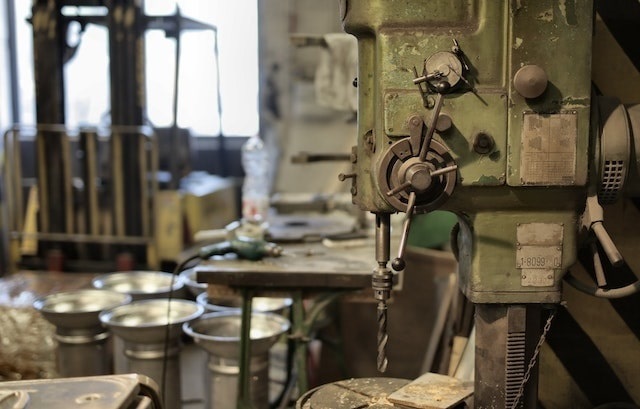
Photo by Andrea Piacquadio via Pexels
Data plates are used for a range of different purposes, which is why they come in a variety of different materials. However, some materials are more popular than others. Metalphoto®, anodized aluminum, and brass are just a few of the most popular data plate substrates available for your business.
Data plates made from Metalphoto® anodized aluminum are created from the most durable aluminum substrate available. MPC’s Metalphoto® data plates last outdoors for over 20 years, even when exposed to extreme environmental conditions.
We seal the data plate’s graphics beneath a hard anodic layer, which makes the surface virtually impenetrable and resistant to:
Data plates made by Metalphoto® will not fade, chip, or peel, either.
Data plates made from anodized aluminum are very durable and offer excellent resistance to chemicals, cleaning solvents, abrasion from dirt or sand, and harsh temperatures. MPC’s regular anodized aluminum data plates are a cost-effective alternative to Metalphoto® in certain applications.
Data plates made from aluminum are lightweight and easily formed, yet strong enough for use in exterior applications. Aluminum is less expensive than other metals, which makes it an economical but durable choice for businesses that need a large volume of data plates.
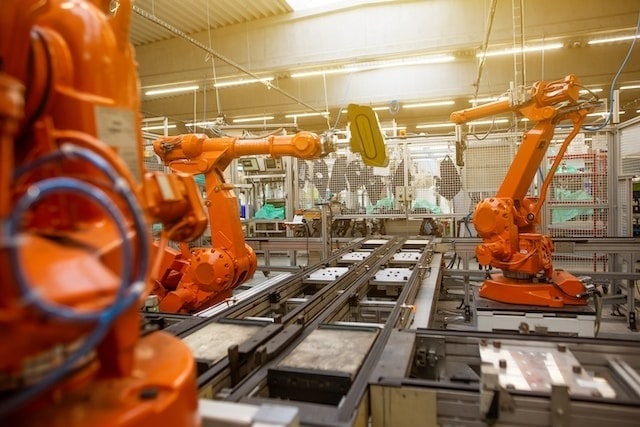
Photo by Simon Kadula on Unsplash
Stainless steel is a strong, low-maintenance metal with an expected exterior life of up to 20 years. Data plates made from stainless steel will withstand corrosion, chemicals, and high heat.
Stainless steel is naturally antimicrobial, so it’s popular for food service and healthcare settings. It also performs well in caustic or acidic environments that could destroy aluminum data plates.
Brass data plates are highly effective for both indoor and outdoor use because they offer exceptional protection against salt water, chemicals, and corrosion. Brass is a low-friction metal that doesn’t produce sparks, which makes the material a safer choice for environments with potentially explosive elements or fire.
Polyester data plates work well for indoor equipment and industrial use because of their durability, clarity, and versatility. They resist chemicals and abrasions and can handle varying temperatures and humidity levels. MPC’s polyester data plates are lightweight, easy to print, and die-cut for faster production.
Data plates made from polycarbonate (a strong plastic) are a popular option for product identification, labeling, and packaging thanks to their strong mechanical properties. Polycarbonate data plates are easier to read because of their high light transmission and low haze.
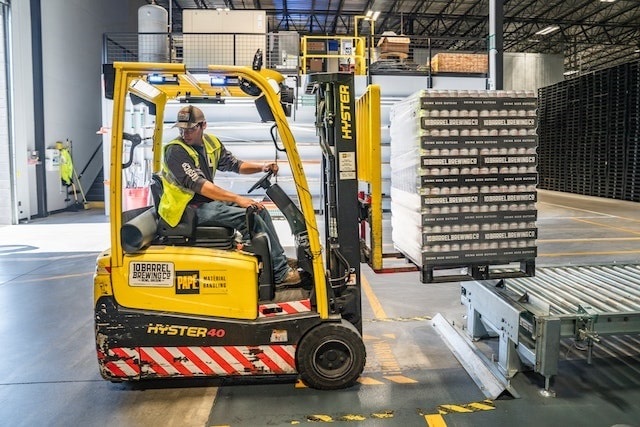
Photo by ELEVATE via Pexels
Data plates communicate essential information to manufacturers, installers, and end users. As long as you use consistent labeling on your data plates, everyone in your organization can use this information to stay productive and safe.
Data plates might seem like a jumble of information, but they’re easy to read. You read a data plate the same way you read a book: from left to right, top to bottom.
Of course, the content of a data plate depends on the use case. Applications for data plates vary widely, so there will be nuances to each data plate in your business.
For example, a data plate on an industrial forklift is usually located on the instrument panel near the operating controls. This data plate will likely include:
The data included on a data plate depends entirely on the piece of equipment and use case. For example, a forklift should include information about the machine’s weight, size, and capabilities. But if you’re labeling a different asset, it might require more or less information.
Before ordering data plates for your assets, research the information required for the plates, whether for safety or compliance reasons. At a minimum, your plates should include:

Photo by Lenny Kuhne on Unsplash
From microwaves and furnaces to airplanes and elevators, data plates are everywhere. They help identify and track products, ensure safety, and maintain regulatory compliance.
A wide range of industries relies on data plates, including businesses in the automotive and transportation, food processing and service, telecom and cable, energy and utilities, manufacturing, and defense markets. Let’s look at some of the most common use cases for data plates across different industries.
This industry uses data plates on finished automobiles, commercial vehicles, and airplanes. Some parts and components also require data plates.
The challenge is that many transportation assets are outdoors, so they’re subjected to a range of environmental conditions like extreme temperatures and UV exposure. Because of these tough conditions, automotive businesses often use data plates made from durable materials like Metalphoto® or anodized aluminum.

Photo by Anna Shvets on Pexels
The foodservice and food processing industry has a lot of specialized equipment in need of labeling. Food and beverage companies label this equipment with data plates to communicate information to operators and service techs.
Many food service companies use data plates to label equipment like:
The added challenge is that food service materials must be safe enough to come into contact with food.
The food processing and foodservice industry has strict cleanliness requirements, so it’s best to use data plates made from stainless steel. It’s naturally antimicrobial, withstands extreme temperatures, and resists chemicals, which makes it the most durable substrate for the food industry.
From telephone wires to cable boxes, the telecom industry handles a lot of equipment. Telecom and cable companies use data plates for:
Field service is the standard for this industry, which is why it’s so important to use durable labels. Telecom equipment is usually located outside, so rugged labels made from Metalphoto® are the best fit.
Energy and utility companies rely on a lot of equipment to offer power, water, and other utilities. This industry faces frequent equipment inspections, so clearly-marked data plates can significantly speed up this process.
This equipment is usually outside and exposed to the elements, so it’s best to go with data plates made from Metalphoto®. This substrate has an expected exterior life of over 20 years, which helps utility companies avoid the hassle of ordering replacement plates.

Photo by Edward Jenner on Pexels
The healthcare industry is highly regulated. Data plates on medical equipment must meet stringent safety and quality control requirements. Metal data plates are the standard in this field, where organizations use data plates for:
Because of stainless steel’s antimicrobial properties, this metal substrate is the most popular option for data plates in hospitals and surgical centers
The manufacturing industry uses data plates on equipment, machinery, and tools—including everything from forklifts to move materials to packaging machinery to prepare goods for storage and transport—to identify equipment and provide safety information. Manufacturers use data plates for:
Metalphoto®, anodized aluminum, and stainless steel are durable options for manufacturers. However, if you work in an environment with open flames or sparks, it’s best to go with non-reactive substrates like brass.

Photo by Pixabay via Pexels
In military and defense, there’s no margin for error. Mishaps come with disastrous consequences, which is why there are so many regulations for military and defense data plates.
In addition to identifying information, military data plates also have to meet specific standards for:
These standards ensure that the data tags stay legible in even the most extreme conditions. It’s tough meeting all these requirements, but substrates like Metalphoto® anodized aluminum ensure the plates’ longevity with maximum performance.
Marine companies use data plates to identify vessels as well as critical equipment. Seafaring vessels, underwater structures, pipes, and equipment are constantly exposed to wind, salt, water, and varying temperatures. These are tricky conditions, which is why it’s so important to use data plates made from durable materials like:

Photo by Tim Gouw via Pexels
Used effectively, data plates speed up maintenance, improve workplace safety, and maintain compliance. Even so, it’s best to optimize your data plates to glean as much value as possible. Follow these best practices to design better data plates.
First things first, understand which regulations you need to comply with before you order or design your data plates. Some industries have very specific requirements for data plates.
If you’re in a highly regulated industry like defense, food service, or healthcare, there might be industry-specific regulations for data plate materials, sizing, or shapes. Work with your legal department to understand all the parameters your tags need to follow.
What are the environmental demands like? Metal is a solid option for harsh environments, but it doesn’t always hold up in environments with corrosive chemicals. Stainless steel is ideal for sanitary environments, while brass is best for environments with fire or sparks.
Designing your data plates is just the beginning. Plate durability certainly matters, but you don’t want these plates to fall off your assets, either. Decide which attachment method works best for your use case.
For example, industrial data plates usually come with mounting holes to attach the plate to equipment with screws. However, pressure-sensitive adhesive is sometimes a better fit for other environments.
Keep in mind that especially harsh environments or extreme temperatures might require a combination of the two for a more secure attachment.
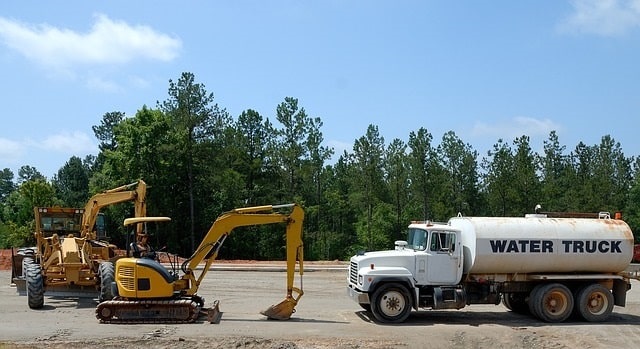
Image by Paul Brennan from Pixabay
Data plates convey important information to installers, technicians, and operators. The details on a data plate vary by industry, equipment type, and use case, so it’s important to customize them for your business.
Data plates are a must-have for both compliance and safety. Protect your business with a reputable data plate manufacturer like MPC.
Our experts help you choose the best metal substrate for your application. We can even help you add graphic elements like text, barcodes, and full-color logos.
Once we finalize your data plate, you can request a prototype for on-site testing before submitting an order.
Contact MPC today to request a quote and create custom data plates for your business.
At a minimum, data plates include the following information:
Data plates read like a book. Look at the information from left to right, up and down. However, the exact format may differ depending on the use case.
There is no difference between a data plate and a nameplate. These terms are used interchangeably. They refer to the durable plates businesses attach to machinery, assets, or equipment.
Our sales engineers are experts in automatic asset tracking, tagging and identification,a nd can answer all your questions. Get in touch now.
Lets Talk ›